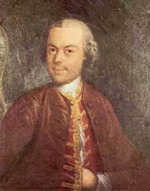
 Click to enlarge
Click to enlarge
|
Swiss-born watchmaker of the late eighteenth century. In 1758, Jaquet-Droz, whose name lives on in the high-end mechanical-watch brand owned by the Swatch Group (bought it in 2000) , scared so many people with his mysterious, other-worldly machines that he was suspected of witchcraft. That year, Jaquet-Droz, an erudite clockmaker from the Swiss town of La Chaux-de-Fonds, brought his finest pieces to Madrid to show King Ferdinand VI in hope of drumming up some business in Spain. They were no ordinary clocks: they had figures – people, animals, birds – that moved by themselves as if propelled by magic. King Ferdinand was amused. All but the king fled in fear when they saw the clocks. Most believed Jaquet-Droz was possessed. To clear his name, he asked to meet with Spain’s Grand Inquisitor. After demonstrating the clocks and explaining how he worked, he managed to convince the Spaniard that he should not be jailed. The best-known automatons were “The Writer,” “The Draughtsman” and “The Musician.” The first, a barefoot, three-year-old boy, could write a message containing as many as 40 characters on a piece of paper. The second, also a young boy, could draw one of four pictures, pausing occasionally to blow the dust off his paper. The third, a young woman, could play five different melodies on an organ by pressing keys on a keyboard, bowing sweetly after each tune. The three were completed in the 1770s and shown at royal courts across Europe. Marie Antoinette and Louis XVI saw them. Although Jaquet-Droz is most famous for his clocks and automata, which were sold all over the world (the company had a huge following in China), the company was also greatly admired for its watches. The company flourished, reaching its zenith just before the French Revolution, when it had workshops in three cities: La Chaux-de-Fonds, Geneva and London. |
|||||||||||||||||||||||||||||||||||
|
variant spelling: JACQUET-DROZ, Pierre |
|||||||||||||||||||||||||||||||||||
| Curriculum vitae |
|
||||||||||||||||||||||||||||||||||
